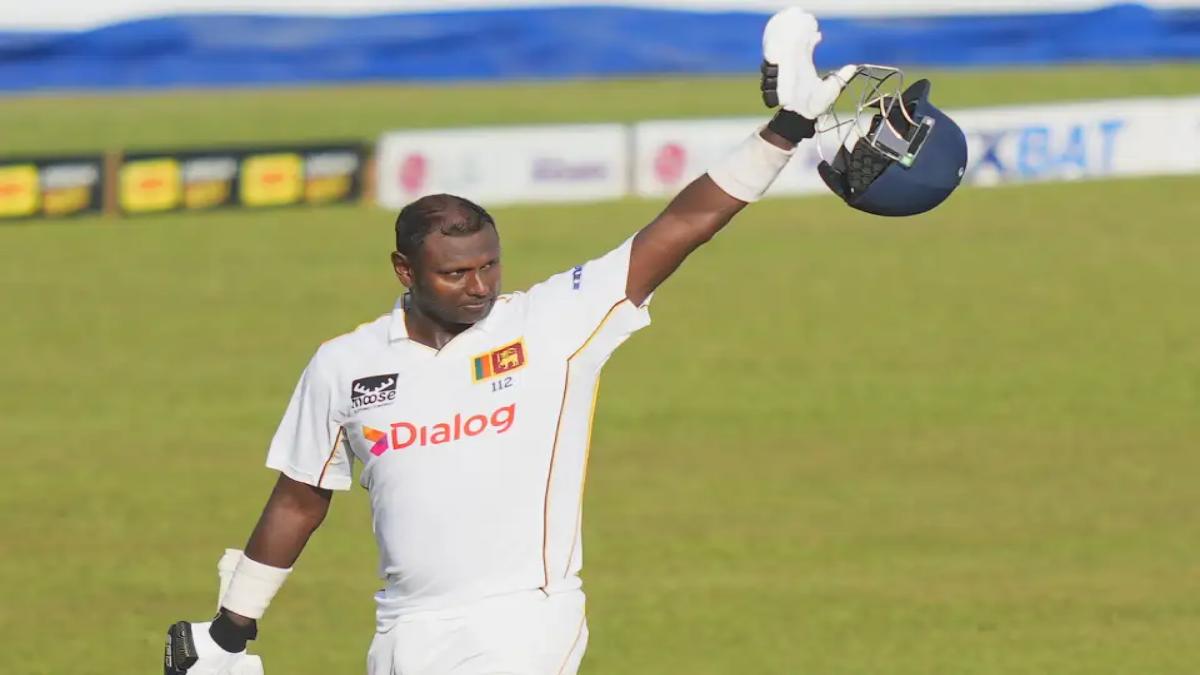Galle, Sri Lanka: Sri Lanka successfully batted out 32 overs in the final session to secure a draw in the first Test against Bangladesh, a result achieved despite losing four quick wickets and facing a period of jeopardy. The teams shook hands with five overs remaining in the day, as Dhananjaya de Silva and Kamindu Mendis comfortably held their ground. However, Bangladesh will undoubtedly reflect on a crucial question: could they have declared their innings sooner?
Dhananjaya and Kamindu came together after Sri Lanka lost veteran Angelo Mathews and Dinesh Chandimal in rapid succession to the excellent Taijul Islam, who finished with figures of 3 for 23. Despite the best efforts of Taijul and Nayeem Hasan, it became evident that the remaining six wickets would not fall within the available 37 overs. The lingering thought for Bangladesh will be the impact of an additional 13 overs had they declared earlier.
Bangladesh’s Declaration Dilemma
As events unfolded, Bangladesh added 48 runs in 11 overs in the post-lunch session, which was interrupted by a roughly two-and-a-half-hour rain delay. Sri Lanka was ultimately set a target of 296 runs off 37 overs, requiring a steep eight runs per over for an unlikely victory.
The decision for Bangladesh to continue batting after the rain break appeared primarily driven by the desire for Najmul Hossain Shanto to reach his second century of the match. This marked the third instance of a Bangladeshi batsman scoring two centuries in the same Test, and the second time Shanto had achieved the feat. It took Shanto 50 deliveries after the restart to reach his milestone, during which Bangladesh scored only 19 runs and lost the wickets of Litton Das and Jaker Ali, both succumbing to increasing turn and frustration with defensive lines. However, in the subsequent 16 balls, Bangladesh plundered 28 runs, including three sixes from Shanto.
These late runs, scored on a pitch that had begun to take “pretty extravagant turn”—likely due to moisture trapped under the covers—were impressive but also cast a critical light on Bangladesh’s slow scoring rate earlier in the day. In the hour and a bit before the rain, Bangladesh had plodded along at a session run rate of just 3.15. Conventional wisdom suggested needing at least two sessions to bowl Sri Lanka out, and with Bangladesh aiming for a lead exceeding 300, a run rate of five or more seemed necessary. However, with Sri Lanka also setting defensive fields, Bangladesh, having endured a lean period in Tests recently, seemed reluctant to risk valuable World Test Championship points.
In hindsight, even with a lead of 247 at the break, an earlier declaration might have been the correct call. At that point, 50 overs remained in the day, and Bangladesh would undoubtedly have welcomed every one of them.
Taijul and Nayeem, in particular, would have benefited from more overs, as both spinners exploited the now-deteriorating Galle surface far more effectively than their Sri Lankan counterparts. Taijul was especially dangerous, threatening both edges, highlighted by the dismissals of Mathews and Chandimal. Mathews was caught bat-pad off an arm-ball, while Chandimal was bowled by a ripper that bypassed his forward defense. Earlier, Taijul had stumped Lahiru Udara after dragging one shorter. Nayeem, meanwhile, had Nissanka chip one to short midwicket after playing early.

